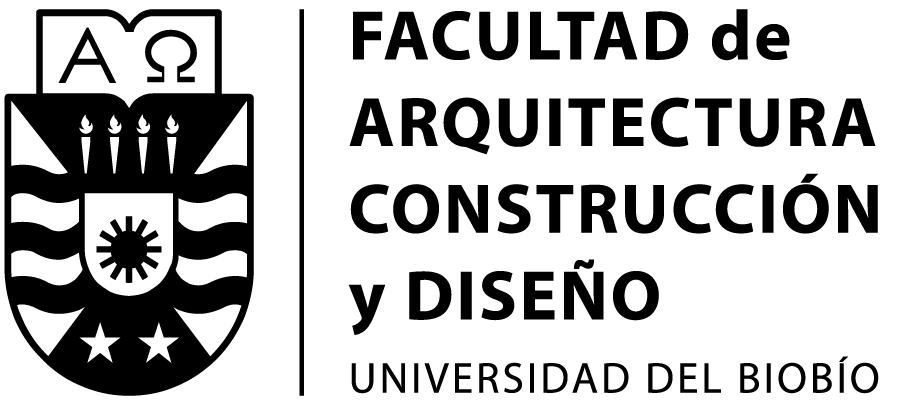Escasez hídrica y letalidad por COVID-19 en zonas rurales chilenas
DOI:
https://doi.org/10.22320/07183607.2023.26.48.01Palabras clave:
abastecimiento de agua, gestión de los recursos hídricos, COVID-19, zonas rurales, sequíaResumen
La pandemia de COVID-19, la cual fue provocada por la propagación a nivel mundial del virus SARS-CoV-2 en marzo 2020, ha impactado severamente en muchos ámbitos de la vida y la salud de las personas. Dentro de las principales formas de prevención de la propagación del coronavirus está el lavado frecuente de manos y alimentos, con jabón y agua. Este último es un recurso escaso en varios municipios de Chile, evidenciando dificultades en el abastecimiento de agua a nivel nacional. El presente trabajo indaga la relación entre los municipios decretados en situación de escasez hídrica por el gobierno y los niveles de letalidad al COVID-19 presentados en zonas rurales entre marzo del año 2020 y junio del año 2021. A través de datos estadísticos obtenidos de diferentes bases de datos se correlacionaron las tasas de letalidad con el nivel de desarrollo municipal y el acceso a la red de agua potable. Se obtuvo una correlación negativa entre la alta letalidad al COVID-19 y los bajos niveles de desarrollo comunal y conexión a la red de agua potable, por lo que se considera necesario contemplar las variables geográficas, tales como lo es la escasez hídrica, en la generación de políticas de salud pública y gestión de los recursos hídricos.
Descargas
Citas
ANTWI, S. H., GETTY, D., LINNANE, S. & ROLSTON, A. (2021). COVID-19 water sector responses in Europe: A scoping review of preliminary governmental interventions. Science of the Total Environment, 762, 143068. https://doi.org/10.1016/j.scitotenv.2020.143068
ATZRODT CL, MAKNOJIA I, MCCARTHY RDP, OLDFIELD TM, PO J, TA KTL, STEPP HE & CLEMENTS TP. (2020). A Guide to COVID-19: a global pandemic caused by the novel coronavirus SARS-CoV-2. FEBS J., 287(17):3633-3650. https://doi.org/10.1111/febs.15375
BALBUS, J., & MALINA, C. (2009). Identifying Vulnerable Subpopulations for Climate Change Health Effects in the United States. Journal of occupational and environmental medicine, 51, 33-37. https://doi.org/10.1097/jom.0b013e318193e12e
BAUZA, V., SCLAR, G. D., BISOYI, A., OWENS, A., GHUGEY, A. & CLASEN, T. (2021). Experience of the COVID-19 pandemic in rural Odisha, India: knowledge, preventative actions, and impacts on daily life. International journal of environmental research and public health, 18(6), 2863. https://doi.org/10.3390/ijerph18062863
BERMAN, J. D., RAMIREZ, M. R., BELL, J. E., BILOTTA, R., GERR, F., & FETHKE, N. B. (2021). The association between drought conditions and increased occupational psychosocial stress among U.S. farmers: An occupational cohort study. Science of The Total Environment, 798, 149245. https://doi.org/10.1016/j.scitotenv.2021.149245
Budds, J. (2016). Whose Scarcity? The Hydrosocial Cycle and the Changing Waterscape of La Ligua River Basin, Chile. En Contentious geographies: Environmental knowledge, meaning, scale. (pp. 59-68). Recuperado de: https://old.danwatch.dk/wp-content/uploads/2017/03/Budds-J-2008-Whose-Scarcity-The-Hydrosocial-Cycle-and-the-Changing-Waterscape-of-La-Ligua-River-Basin-Chile.pdf
BURSTEIN-RODA, T. (2018). Reflexiones sobre la gestión de los recursos hídricos y la salud pública en el Perú. Revista Peruana de Medicina Experimental y Salud Pública, 35 (2), 297 - 303. https://doi.org/10.17843/rpmesp.2018.352.3641
Censos de población y vivienda. (2018). En Instituto Nacional de Estadísticas [INE]. https://www.ine.gob.cl/estadisticas/sociales/censos-de-poblacion-y-vivienda
COÊLHO, A., ADAIR, J., & MOCELLIN, J. (2004). Psychological Responses to Drought in Northeastern Brazil. Revista Interamericana de Psicologia/Interamerican Journal of Psychology, 38(1), 95-103. https://journal.sipsych.org/index.php/IJP/article/view/845/735
Código De Aguas (1981). DFL Nº 1122. Chile Recuperado de https://www.bcn.cl/leychile/navegar?idNorma=5605&idParte=8628023&idVersion=
CORREA-ARANEDA, F., ULLOA-YÁÑEZ, A., NÚÑEZ, D., BOYERO, L., TONIN, A. M., CORNEJO, A., & ESSE, C. (2021). Environmental determinants of COVID-19 transmission across a wide climatic gradient in Chile. Scientific Reports, 11(1), 9849. https://doi.org/10.1038/s41598-021-89213-4
CUI, J., LI, F. & SHI, Z.L. (2019). Origin and evolution of pathogenic coronaviruses. Nature Reviews Microbiology 17(3), 181-192. https://doi.org/10.1038/s41579-018-0118-9
DEL TRONCO PAGANELL, J. & PAZ-GÓMEZ, D. (2022). De las herramientas de gobierno a los instrumentos de política. Un análisis de las estrategias frente al covid-19 en Sudamérica. Estudios de Derecho, 79(173). https://doi.org/10.17533/udea.esde.v79n173a10
DEWI, S. P. & PRIHESTIWI, R. C. (2022). Urban Design Initiatives in Drought-prone Areas dealing increasing Water Demand as Pandemic Covid-19 Impact. International Journal of Built Environment and Sustainability, 9(2-2), 75-86. https://doi.org/10.11113/ijbes.v9.n2-2.1027
Dirección General de Aguas (DGA) de Chile. (2021, 19 noviembre). Nuevos decretos de escasez hídrica en Chile: ¿Cuáles son sus efectos? iAgua. https://www.iagua.es/noticias/dga-chile/nuevos-decretos-escasez-hidrica-chile-cuales-son-efectos
EBI, K., & BOWEN, K. (2015). Extreme events as sources of health vulnerability: Drought as an example. Weather and Climate Extremes, 11, 95-102. https://doi.org/10.1016/j.wace.2015.10.001
FAURÈS, J. (2012). Coping with water scarcity: An Action Framework for Agriculture and Food Security. Food & Agriculture Organization of the United Nations (FAO). https://www.fao.org/documents/card/en/c/I3015E
Food and Agriculture Organization of the United Nations (2012). Coping with Water Scarcity. An Action Framework for Agriculture and Food Security. En https://www.fao.org/3/i3015e/i3015e.pdf
GARREAUD, R. D., BOISIER, J. P., RONDANELLI, R., MONTECINOS, A., SEPÚLVEDA, H. H., & VELOSO-AGUILA, D. (2020). The Central Chile Mega Drought (2010–2018): A climate dynamics perspective. International Journal of Climatology, 40(1), 421-439. https://doi.org/10.1002/joc.6219
Global Warming of 1.5oC. (2021). En The Intergovernmental Panel on Climate Change [IPCC]. https://www.ipcc.ch/sr15/
Grupo Medioambiental del sistema de las Naciones Unidas en Chile (2021). Escasez hídrica en Chile: Desafíos Pendientes. Naciones Unidas Chile. https://chile.un.org/sites/default/files/2021-03/PB%20Recursos%20H%C3%ADdricos_FINAL_17%20de%20marzo.pdf
GUERRERO ROJAS, R. (2019). Infraestructura estatal en contexto de escasez hídrica: la Provincia de Petorca como territorio hidrosocial. [Tesis]. Universidad de Chile.. https://repositorio.uchile.cl/handle/2250/172912
HEIDARI, H. & GRIGG, N. (2021). Effects of the COVID-19 Pandemic on the Urban Water Cycle. Advances in Environmental and Engineering Research, 2(3), 1-1. https://doi.org/10.21926/aeer.2103021
HERNÁNDEZ BONIVENTO, J., RAMÍREZ FIGUEROA, H., PARRAO CARTAGENA, A., SALAZAR GÓMEZ, L., GONZÁLEZ CASTRO, J., & GODOY BERTHET, C. (2020). Índice de Desarrollo Comunal. Chile 2020. https://doi.org/10.32457/isbn9789568454944962020-ed1
HU, B., GUO, H., ZHOU, P., & SHI, Z. L. (2021). Characteristics of SARS-CoV-2 and COVID-19. Nature Reviews Microbiology19(3), 141-154. https://doi.org/10.1038/s41579-020-00459-7
JAQUE CASTILLO, & HUAICO-MALHUE, A. (2020). Covid-19 en tiempos de escasez hídrica, una mirada hacia las zonas rurales. Revista Geográfica Del Sur, 9(1), 6-7. https://doi.org/10.29393/GS9-1EACT20001
Instituto Nacional de Estadísticas (2018). Síntesis de Resultados CENSO 2017. http://www.censo2017.cl/descargas/home/sintesis-de-resultados-censo2017.pdf
LINTON, J., & BUDDS, J. (2014). The hydrosocial cycle: Defining and mobilizing a relational-dialectical approach to water. Geoforum, 57, 170-180 https://doi.org/10.1016/j.geoforum.2013.10.008
Mesa Nacional del Agua. (2022). Informe Final. Mesa Nacional del Agua. https://www.chileagenda2030.gob.cl/iniciativas/1986/documento/informeFinal2022MesaAgua.pdf
Ministerio de Ciencia, Tecnología, Conocimientos e Innovación (MinCiencia). (2021). Base de datos COVID-19.
https://github.com/MinCiencia/Datos-COVID19 (accedido en: 23 de septiembre de 2022)
Ministerio de Obras Públicas - Dirección de General de Aguas. (2022). Decretos declaración zona de escasez vigentes. https://dga.mop.gob.cl/administracionrecursoshidricos/decretosZonasEscasez/Paginas/default.aspx
Organización Mundial de la Salud [OMS]. (2020). Estimación de la mortalidad de la COVID-19. Nota científica. https://apps.who.int/iris/bitstream/handle/10665/333857/WHO-2019-nCoV-Sci_Brief-Mortality-2020.1-spa.pdf (accedido en: 23 de septiembre de 2022)
OPPLIGER, A., HÖHL, J. & FRAGKOU, M. (2019). Escasez de agua: develando sus orígenes híbridos en la cuenca del Río Bueno, Chile. Revista de Geografía Norte Grande (73), 9-27. https://doi.org/10.4067/s0718-34022019000200009
PALACIOS SOLÍS, I., SARRICOLEA, P., VILLAROEL, J. & SANDOVAL, G. (2021). Visor de tasas de letalidad y mortalidad por COVID-19 para las comunas del Área Metropolitana de Santiago. Períodos de primera y segunda ola. https://www.arcgis.com/apps/dashboards/d890c041c4544789b8c591353fe39b62
PEREIRA, L., CORDERY, I., & IACOVIDES, I. (2009). Introduction. In: Coping with Water Scarcity. (pp. 1-6). https://doi.org/10.1007/978-1-4020-9579-5_1
Política Nacional de Desarrollo Rural Núm. 42.647 (2020). https://www.odepa.gob.cl/wp-content/uploads/2020/08/DIARIO-OFICIAL-PNDR-DS19-2020.pdf (accedido en: 23 de septiembre de 2022)
ROMANELLO, M., MCGUSHIN, A., DI NAPOLI, C., DRUMMOND, P., HUGHES, N., JAMART, L., KENNARD, H., LAMPARD, P., RODRÍGUEZ, B. S., ARNELL, N. W., AYEB‐KARLSSON, S., BELESOVA, K., CAI, W., CAMPBELL-LENDRUM, D., CAPSTICK, S., CHAMBERS, J., CHU, L., CIAMPI, L., DALIN, C., . . . HAMILTON, I. (2021). The 2021 report of the Lancet Countdown on Health and Climate Change: Code Red for a Healthy Future. The Lancet, 398(10311), 1619-1662. https://doi.org/10.1016/s0140-6736(21)01787-6
SANJUAN-REYES, S., GÓMEZ-OLIVÁN, L. M., & ISLAS-FLORES, H. (2021). COVID-19 in the environment. Chemosphere, 263, 127973. https://doi.org/10.1016/j.chemosphere.2020.127973
SISS. (2019). Informe de gestión del sector sanitario. https://www.siss.gob.cl/586/w3-propertyvalue-6415.html (accedido en: 23 de septiembre de 2022)
Sistema de Indicadores de Calidad de Vida Rural. (2021). En Instituto Nacional de Estadísticas [INE]. https://www.ine.gob.cl/herramientas/portal-de-mapas/sicvir
SIVAKUMAR, B. (2021). COVID-19 and water. Stochastic Environmental Research and Risk Assessment, 35(3), 531-534. https://doi.org/10.1007/s00477-020-01837-6
STANKE, C., KERAC, M., PRUDHOMME, C., MEDLOCK, J. M., & MURRAY, V. (2013). Health Effects of Drought: A Systematic Review of the evidence. PLOS Currents. https://pubmed.ncbi.nlm.nih.gov/23787891/
SWYNGEDOUW, E. (2009). The Political Economy and Political Ecology of the Hydro-Social Cycle. Journal of Contemporary Water Research & Education, 142(1), 56-60. https://doi.org/10.1111/j.1936-704X.2009.00054.x
VAN LOON, A. F. Y VAN LANEN, H. A. J. (2013). Making the distinction between water scarcity and drought using an observation-modeling framework. Water Resources Research, 49(3), 1483-1502. https://doi.org/10.1002/wrcr.20147
World Health Organization [WHO] (2020a). Coronavirus. En https://www.who.int/es/health-topics/coronavirus#tab=tab_1
World Health Organization [WHO] (2020b). Limpieza y desinfección de las superficies del entorno inmediato en el marco de la COVID-19. En https://apps.who.int/iris/bitstream/handle/10665/332168/WHO-2019-nCoV-Disinfection-2020.1-spa.pdf?sequence=1&isAllowed=y
World Health Organization [WHO] (2020c). Interim Guidance April 2020: Water, Sanitation, Hygiene and Waste Management for the COVID-19 virus Interim Guidance April 2020, pp. 1e9. https://www.who.int/publications/i/item/WHO-2019-nCoV-IPC-WASH-2020.4
World Wildlife Foundation. (2020). WWF Water Risk Filter scenarios. En https://riskfilter.org/water/explore/countryprofiles (accedido en: 23 de septiembre de 2022)
YUAN, J., YUN, H., WEI, L., WANG, W., SULLIVAN, S. G., JIA, S., & BITTLES, A. H. (2006). A climatologic investigation of the SARS-COV outbreak in Beijing, China. American Journal of Infection Control, 34(4), 234-236. https://doi.org/10.1016/j.ajic.2005.12.006
Descargas
Publicado
Cómo citar
Número
Sección
Licencia
Derechos de autor 2023 Ana Isabel Huaico-Malhue, Claudia Patricia Santibañez-Orellana, Edilia del Carmen Jaque-Castillo, Carolina Ojeda-Leal

Esta obra está bajo una licencia internacional Creative Commons Atribución-CompartirIgual 4.0.
El contenido de los artículos y reseñas que se publican en cada número de Urbano, es responsabilidad exclusiva de los autores y no representan necesariamente el pensamiento ni comprometen la opinión de la Universidad del Bío-Bío.
Las/os autoras/es conservarán sus derechos de autor, sin embargo, garantizarán a la revista el derecho de primera publicación y difusión de su obra. La publicación del artículo en Urbano estará sujeta a la Licencia de Reconocimiento de Creative Commons CC BY-SA que permite a otros compartir-copiar, transformar o crear nuevo material a partir de esta obra para cualquier propósito, incluso comercialmente, siempre y cuando se reconozcan la autoría y la primera publicación en esta revista, y sus nuevas creaciones estén bajo una licencia con los mismos términos.![]()























